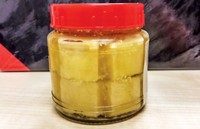Advertisement
Grab your lab coat. Let's get started
Welcome!
Welcome!
Create an account below to get 6 C&EN articles per month, receive newsletters and more - all free.
It seems this is your first time logging in online. Please enter the following information to continue.
As an ACS member you automatically get access to this site. All we need is few more details to create your reading experience.
Not you? Sign in with a different account.
Not you? Sign in with a different account.
ERROR 1
ERROR 1
ERROR 2
ERROR 2
ERROR 2
ERROR 2
ERROR 2
Password and Confirm password must match.
If you have an ACS member number, please enter it here so we can link this account to your membership. (optional)
ERROR 2
ACS values your privacy. By submitting your information, you are gaining access to C&EN and subscribing to our weekly newsletter. We use the information you provide to make your reading experience better, and we will never sell your data to third party members.
Environment
Strange Plate-Fellows
August 13, 2012
| A version of this story appeared in
Volume 90, Issue 33
It is good that Carmen Drahl’s article on molecular gastronomy has the subtitle “Controversial Theory of Flavor Pairing” and includes a number of comments by others who believe the “theory” has no basis in fact (C&EN, June 18, page 37). Foods are distinguishable by their flavor—that is, aroma plus gustatory components (sweet, sour, bitter, umami, salty) in addition to temperature and texture. In discussing a food flavor, many factors operate at multiple interactive levels to constitute food taste and preference.
The food-flavor industry is aware that there are significant variations in the chemosensory aspects of food preference. These can include genetic aspects, cultural background, hormonal signals, health, emotion and stress, economic status, and social context.
There is the classical psychology experiment where blue mashed potatoes are found to be repellent to test subjects under normal light conditions but not a factor when tasted blindfolded. Also, consider the difficulty the military has in getting pilots in their survival training to overcome their cultural bias and eat grubs or other similar sources of protein foods to survive.
The major international food chains are successfully selling Americanized fast foods such as fried chicken, pizza, and potato and corn chips in Asia and South America as the income levels of those countries increase. Therefore, the citation for the presence of 4-methylpentanoic acid in mozzarella, tomato, and parmesan cheese is ironic, since these foods are the key ingredients in pizza and are rich sources of glutamic acid, aka MSG. It is more likely those ingredients along with mushrooms, another source of glutamic acid, are a greater attractor in preferred food taste than the 4-methylpentanoic acid.
Another hidden factor in any food preference is the presence of natural flavor maskers and enhancers within various ingredients. These flavor effects are usually balanced or adjusted by the culinary process. As an example, most baking recipes include addition of minor levels of vanilla extract—a key flavor enhancer that does not generate vanilla flavor unless used in significant excess.
Therefore, to find a few common flavor chemicals in food pairs and then claim some interaction would be more credible if PET or 19F NMR studies found signals of stimulating activity at specific locations in the brain that the individual foods do not trigger.
By Michael Porzio
Hunt Valley, Md.





Join the conversation
Contact the reporter
Submit a Letter to the Editor for publication
Engage with us on Twitter